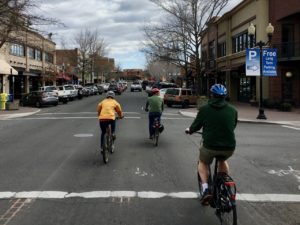The collision that killed Jonathan Chase Adams on November 22, 2017 is a nightmare scenario: a driver unintentionally collides with and kills someone commuting on a bicycle. The problem with yesterday’s district attorney announcement not to bring criminal charges against the driver, and indeed with the coverage of the accident at the time, isn’t that it fails to hold an individual driver accountable. It’s that it conveys the message that this is fine and that our community is powerless to prevent future accidents like these. This is wrong.

Bend’s current road system actually encourages many unsafe driving habits, and the factors that contributed to Adams’ death go far beyond the culpability of an individual driver. The driver in this case was not found to be under the influence, nor was he using his cell phone at the time of the collision. But even if he were hypothetically found to be guilty of a criminal charge, say criminally negligent homicide, would the streets of Bend be any safer as a result? Not likely. That is because it is misguided to think that the best way to make our streets safer is by holding individual drivers more accountable. The way to prevent these nightmares is not to vilify individual drivers or riders, but to look for ways to improve the safety of the system overall.
That’s not to say that individual accountability plays no role. For example, better and more consistent enforcement would make roadways safer for all. Improving overall safety requires looking at safer designs that make streets inherently safer, things like bike boxes that improve the visibility of cyclists. And of course, there is no substitute for a network of protected bike lanes that would allow cyclists and vehicles to get across town without sharing as much of the same space.
To be sure, the City of Bend has already implemented a number of safety features designed to make roads safer. For example, the City recently installed the first bike box in Bend. Curb extensions are a feature of many new neighborhoods that allow pedestrians to cross the street more easily while simultaneously slowing drivers down. These are a good start, but the reaction to Adams’ death, including the observation that “everybody needs to be aware of everybody on the roadways” or that that particular intersection does not appear to be a safety problem, indicate that we have a lot more work to do.
Many of these safety improvements are recommended by what is known as Vision Zero: a commitment to preventing all traffic-related deaths. It is impossible to say whether any single safety improvement would have saved Adams’ life, but a commitment to Vision Zero strategies would certainly make Bend’s roads safer. None of this absolves drivers or cyclists of their responsibility to use the road cautiously, and it may be correct that no individual crime was committed in this death. The real crime is that people continue to die of preventable deaths on the streets of Bend without any real commitment to preventing them.
